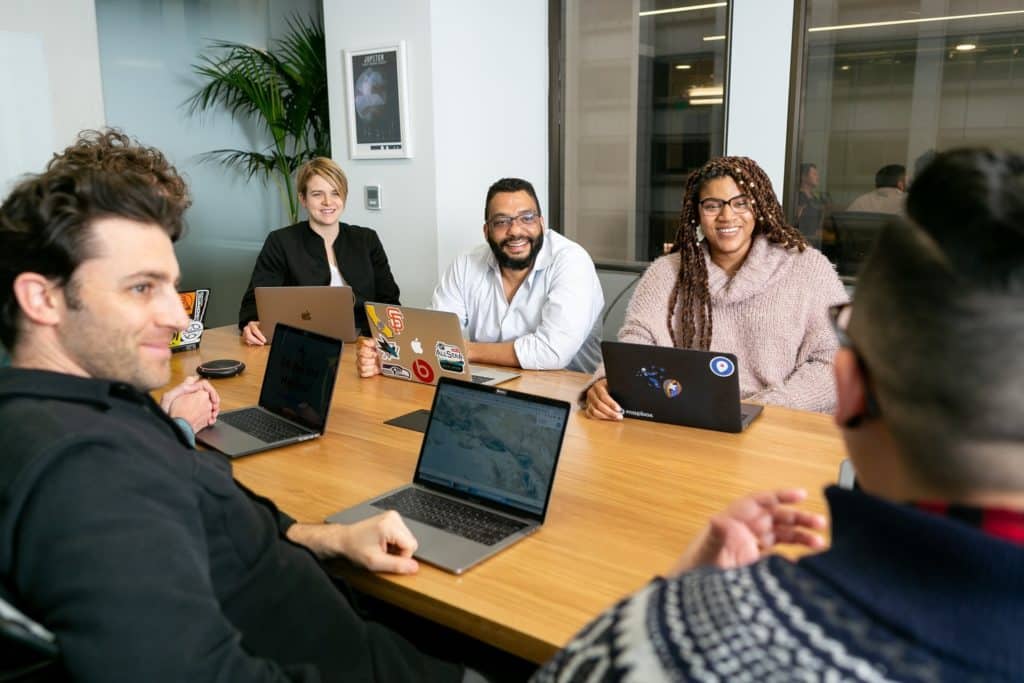Descriptive video helps people who are blind understand the visual aspects of videos. This accessibility tool is becoming more common. In fact, in some cases, video producers must include this feature or a similar one in their content by law.
Descriptive Video Tables of Contents:
- What does descriptive video mean?
- Described video vs audio description what’s the difference?
- Accessibility laws in Canada
- Accessibility laws in the US
- Types of descriptive video services
- Business use-cases for descriptive video and audio description
- Additional descriptive video benefits
- Descriptive video service
- Selecting a descriptive video service provider
Still, descriptive or described video is not as universal as captioning is for major media outlets. Many people still don’t know much about this solution or why they should be offering it to their audiences.
As an essential partner to businesses who prioritize accessibility, Verbit’s team understands the importance of offering an effective descriptive video service. Here is an explanation of why this solution is so important for professionals to begin implementing, along with information about audio description as well.
What does descriptive video mean?
When people are blind or have low vision they can miss many of the cues and context in videos. Visual description of the characters, scenes, action, attire, body language and more allow these audience members to fully understand what’s happening.
It’s important to prevent the audio being used to describe the video from overlapping with any dialogue or narration. The overlap can lead to even greater confusion. For this reason, standard descriptions are inserted during gaps in the original audio. When done well, the visual description allows members of the audience to create a mental picture of the scenes they can’t see.
Most of the time, production companies will add the described video audio in post-production. When professionals add the descriptions after the original video is complete, they can carefully word and construct the audio to fit into the film. However, in the case of live programming such as TV and business conferences, a descriptive video service may need to provide the descriptions in real-time.

Described video vs audio description what’s the difference?
Described video and audio description are similar, and in some cases, they’re identical. Essentially, described video is the Canadian term for what accessibility providers in the US and the UK call audio description. The reason for the difference in terminology is that “audio description” refers to a slightly different accessibility solution in Canada.
In Canada, “audio description” refers to a simpler voice over where a speaker reads any written text and describes graphics. Described video in Canada and “audio description” in the US and the UK refer to a more comprehensive solution that provides additional context for people who are blind.
Accessibility laws in Canada
Canadian laws require audio description and described video for certain content. Since 2001, the Canadian Radio-Television and Telecommunications Commission has required that some programming and networks include described video content. However, not all programs need to have this service available. In recent years, the CRTC has expanded its requirements and more video content will need to include this accommodation.
Additionally, the Accessibility for Ontarians with Disabilities Act (AODA) has more stringent requirements for descriptive video. That legislation is one of the world’s broadest accessibility laws.
Accessibility laws in the US
In the United States, the 21st Century Communications and Accessibility Act phased in increasingly stringent audio description requirements from 2010 through 2020.
Additionally, the Rehabilitation Act of 1973 includes updated provisions that require audio description. For instance, Section 508 of the Rehabilitation Act sets audio description requirements specifically, similar to its requirements for captioning.
The Americans with Disabilities Act (ADA) also influences the use of audio description by making it illegal to exclude people with disabilities in many settings. While the law mainly addresses physical locations, courts have proved willing to extend the reach of the law to online accessibility.
Types of descriptive video services
When it comes to describing videos, there are different styles or ways of adding this feature. Here are the three types of descriptive video solutions that Verbit offers to accommodate different needs.
Standard audio description
Standard audio description and described video involve having a separate audio track that producers add to the finished video after production. In this type of solution, the voice over occurs during breaks in the original dialogue or audio.
Extended audio description
Sometimes standard audio description doesn’t offer enough context. The scenes might need a lot of description, and perhaps there aren’t enough breaks in the audio to interject. Verbit’s extended audio description offers a far more comprehensive description of what’s happening in a video. In order to avoid having the separate audio files lead to confusing and chaotic results, the audience has the ability to pause the video and listen to the audio description.
Real-time audio description
It’s not always possible to wait until post-production to add descriptive audio. Sometimes, live events will include real-time audio description where the descriptive video service provider speaks as the events unfold. This solution works for award shows, sports broadcasting and other live events. For instance, a Verbit Company provided the audio description for this year’s Oscars and Screen Actors Guild Awards.

Business use-cases for descriptive video and audio description
When it comes to adopting descriptive video, media outlets might be ahead of other businesses. However, creating an inclusive corporate culture is continuing to become a workplace priority for employees, job seekers and consumers. There are several scenarios when descriptive audio could enhance a company’s video production.
Marketing video
Marketing videos need to reach wide audiences. Excluding potential consumers is simply bad business. Additionally, showcasing corporate inclusivity efforts in marketing videos offers a clear demonstration of that brand’s values. It’s a missed opportunity to not include the millions of individuals who are Blind or have low vision who are part of the brands’ ideal audience. For this reason, top companies are adding audio description or described video to their advertisements.
Training videos
Laws in many countries prevent discrimination against employees or potential employees with disabilities. For instance, the ADA forbids discrimination or the lack of reasonable accommodations for job candidates, not just people working for a company.
Training videos are an important part of onboarding and continuing employee education. If those videos are excluding some members of the company, the result could be a legal battle and damage to the brand’s reputation. Adding a visual description to these resources will allow a business to highlight their own inclusivity efforts, help their employees digest the information and avoid costly legal battles.
Virtual events
Live streaming webinars and important corporate announcements should be accessible to all. Although many event producers understand the importance of including captions to accommodate people who are Deaf or hard of hearing, they’re often neglecting to support people who are blind or have low vision.
Fortunately, accessibility solutions, like Verbit’s, can accommodate live audio description for online events.
Additional descriptive video benefits
Descriptive video offers benefits that extend beyond those for people who are blind or have low vision. A few additional reasons to include this accessibility feature include:
Improve viewing for people who are autistic
Interpreting body language and social cues can be challenging for those on the autism spectrum. Described audio can help these individuals improve their understanding and enjoyment of videos.
Accommodate auditory learners
About 30% of people identify as auditory learners. Described video is often beneficial for them as they may find they can retain or comprehend the content better through this form of input.
Offer greater flexibility
The popularity of podcasts is at least in part due to the flexibility of this format. People can drive, cook, clean or otherwise stray from a screen and still enjoy the content. Described video can similarly make it possible for audiences of video content to move freely without worrying that they’re missing something happening on screen.

Descriptive video service
Adding descriptive video is a great way to boost accessibility, but not every production company professional knows how to carry out this task. Fortunately, there are companies like Verbit that specialize in making content more accessible. Using a descriptive video service provider makes it easier to provide high quality video descriptions at scale.
Selecting a descriptive video service provider
Including video descriptions may seem like a hassle, but it can be done quickly and within budget. With the right partner, businesses can easily offer this solution on their video. When choosing a descriptive video service provider, there are a few things to consider.
Do they offer quality descriptive video?
Described video will only help those who need it if the quality is high. Therefore, those providing the descriptions must speak clearly and be fluent in the relevant language. It’s important to select a professional partner that meets the needs of people who rely on description for accessibility. With Verbit, trained descriptive video professionals who are native speakers provide quality accessibility solutions to customers.
Is it easy to add descriptive video with the provider?
Offering accessibility is easier when partnering with a company that not only has experience in the area, but makes the upload process simple. Verbit provides integrations with video platforms like Zoom, Kaltura, Panopto, Brightcove, Blackboard, Ensemble, JW Player, Vimeo and more to facilitate a quick, user-friendly experience.
Can the provider scale to meet high demands?
Scalability is key when it comes to accessibility solutions. The process should be quick and partners need to have the resources to meet high volume requests. Whether a video or event needs descriptions or captioning, Verbit can tackle large projects quickly and efficiently.
Are they reliable and available?
Planning for accessible live events shouldn’t become difficult because of unavailable descriptive video or captioning services. Working with a professional and experienced accessibility partner like Verbit makes it easier to offer inclusive videos, meetings, lectures and other events.
Do they meet legal standards and accessibility guidelines?
Providing described video is critical to meet necessary accessibility standards like the Web Content Accessibility Guidelines (WCAG) and laws like the ADA. An accessibility partner should be knowledgeable about these standards and offer solutions that meet or exceed current best practices.
Verbit is an essential accessibility partner, providing descriptive videos, captions and transcriptions that make content and events more inclusive. Contact us to learn more about how our accessibility solutions can support your organization’s needs.




